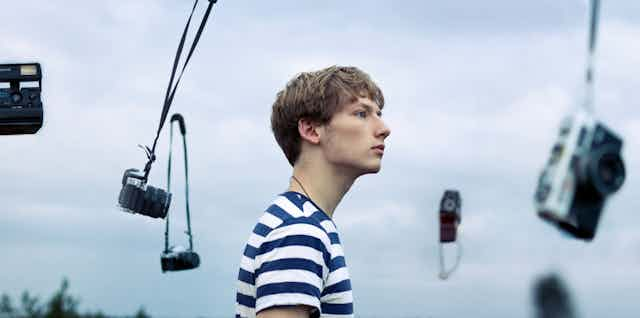Are we being saturated with “inconsequential memoir”?
That question was posed in the latest edition of The Lifted Brow (TLB), a print/online journal of new Australian and international (think US) writing and opinion that’s been around long enough – since 2007 – to have received way too many submissions that it didn’t want.
In its sights are “the unflinching rise of the inconsequential memoir, gonzo arts criticism, selfies at funerals, inane micro stories about the textures of different chair materials when travelling on luxury holidays, etc.”
Yes, narrative nonfiction from the tweet to the book and everything in between is the genre de jour. These are the decades, it would seem, in which “the real” is more immediately fascinating than anything imagined.
Saying a piece of writing is “wholly imagined” by the “writer at her imaginative best” does not have the cachet that saying it is based on real events or real people has. Have we in fact reached the limits of our imaginations, and given up?
Now that the notion of “truth” is only ever lower-case, it would seem “true stories” are what we to read, and aim to write. We resist the relativism of there being nothing True. Digitisation has enabled this seismic cultural shift, amplifying the paradox that with the death of Truth, we long for the real.
So what is this popular beast? Narrative nonfiction (NNF) is written by an “I” who is present to a greater or lesser degree in the work itself, and ideally engages with the qualities of literariness that we recognise in fiction: attention to craft and voice, to vocabulary and language, to pacing, structure and narrative arc.
Unlike that other kind of nonfiction – journalism and reportage – narrative nonfiction does not iron out the voice of the narrator.
Just like fiction, NNF can be intellectually flamboyant (My Heroin Christmas – 2003, Terry Castle), revelatory, aesthetic and political in turn (A Storm and a Teacup – 2008, Mark Tredennick), and provocative in its form and message (What I Heard about Iraq – 2006, Eliot Weinberger).
Or, as the TLB’s editorial desk is finding, agonisingly dull.
The author of the nonfiction work is closely aligned to the narration or narrator. He or she is the actual speaker who experienced the quake, felt that tug at the sleeve, had those realisations. The narrator is “the real author” in a way that we know not to be true (or highly uncertain) in fiction.
Frank Moorhouse is obviously not the character Edith Campbell Berry of Grand Days, but is the implied author and narrator of Martini: a memoir.
Helen Garner is not “Helen” in The Spare Room, though her presence as the “implied author” is very strong indeed. And, in fact at times overwhelms all her writing, so present is “Helen Garner” as an author in readers’ minds.
All these works are imbued with the sensibility of the author writing from a specific time and place. But, this distinctiveness is not dependent on the genre, or on the degree of presence of the implied author in the work.
It’s what you do with your kit that matters, not what genre it is.
Good writing is interested in the world, and the self in the world. We perceive through our being in the world, which can confuse us into thinking that the perceiving, sensing “I” is more important or more interesting than it is. It’s hard work being interesting, and not all emerging writers know that. The key is to reflect, to not just hurtle on to the next incident or thought bubble.

Karl Ove Knausgaard’s series of novels, My Struggle (Min Kamp in Norwegian), are not really novels but autobiographies. They are hugely successful. In terms of his critical mass, he’s equal to George RR Martin’s Game of Thrones’ book sales. He writes about himself. The novels’ characters are his own family and friends, names unchanged.
In Norway, he is so popular that there is now a verb, to Knaus, meaning to relate a real experience to an incident in one of his books.
Karl Ove chronicles his troubled past and episodes from his adult life. The New Yorker’s critic Joshua Rothman wrote recently that “he [Knausgaard] holds a mirror up to his life; you look, and see yourself”. Australian writer Tegan Bennett Daylight describes his eye as “pitiless”.
To the critic James Wood, Knausgaard’s writing is a struggle against death, “in which writing is both weapon and battlefield”. According to Wood, his writing attains what Walter Benjamin called “the epic side of truth, wisdom”.
This is writing that pushes at the limits of what is possible. It engages with the real in imaginative ways.
Non-fiction comes in many guises, with many red-herrings, but even in this lower-case world there is Truth. Astute readers will recognise it.

